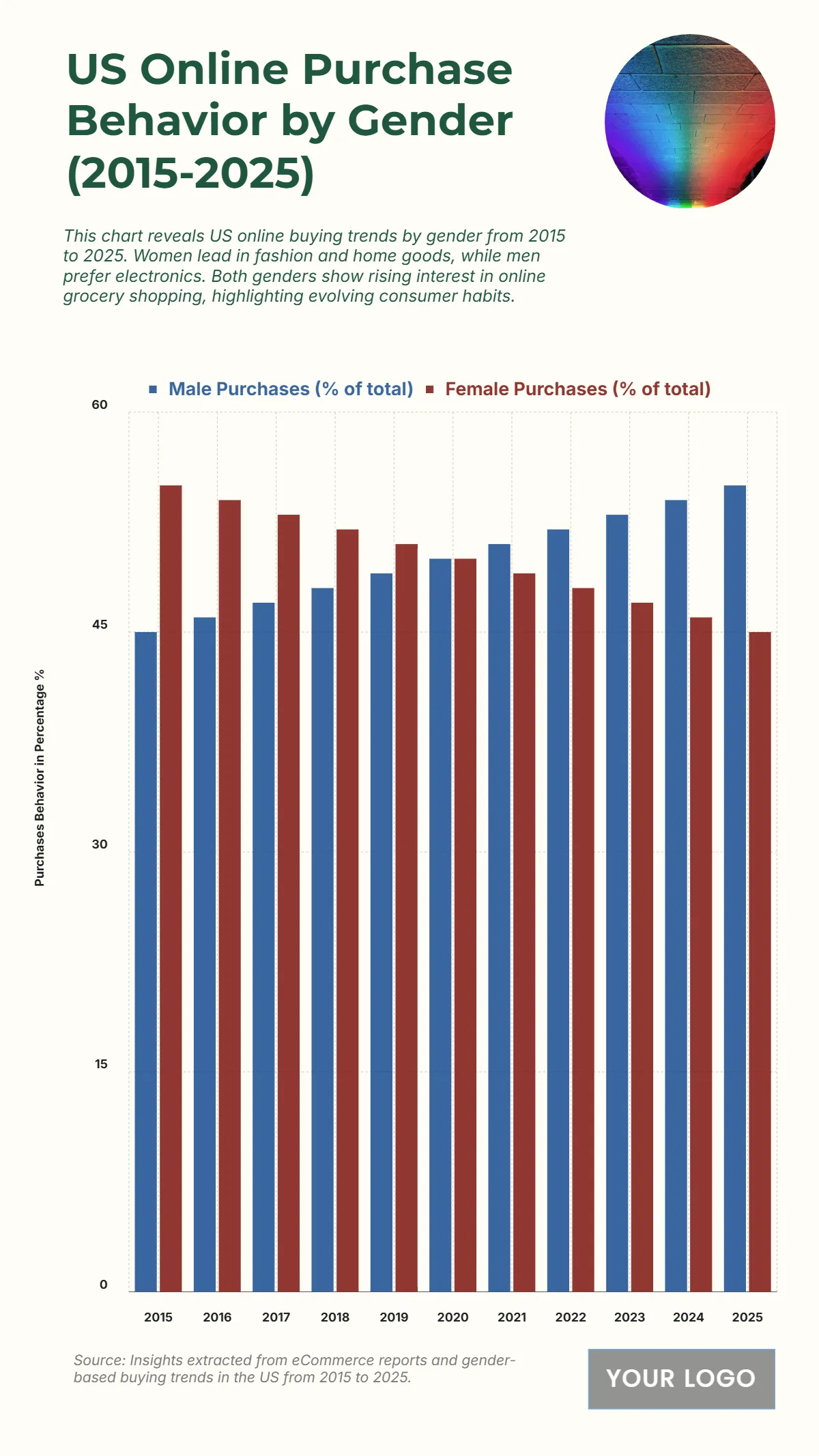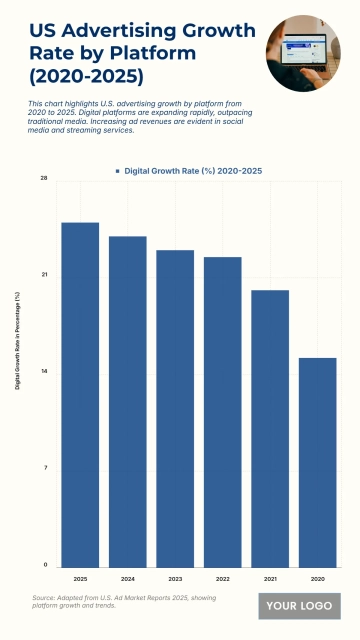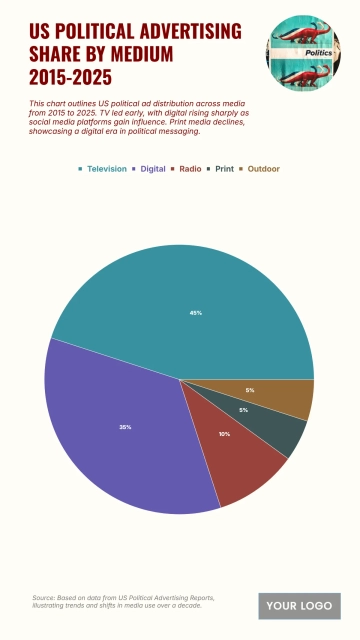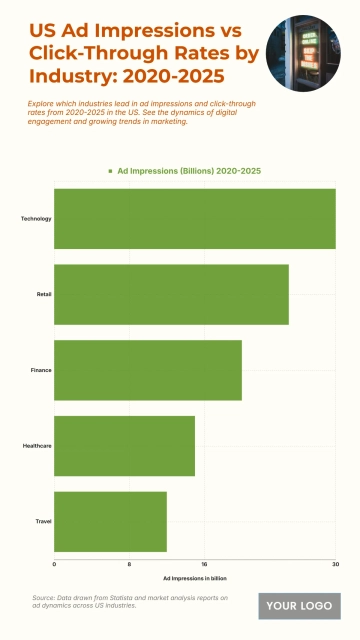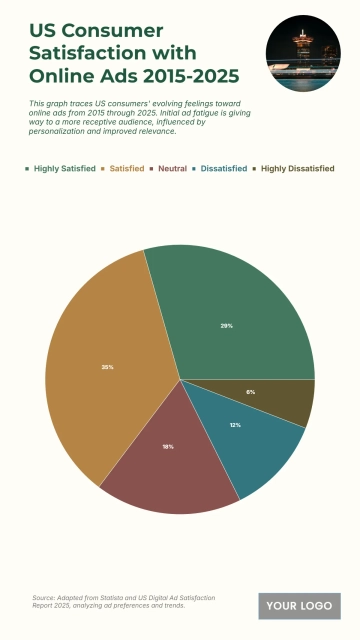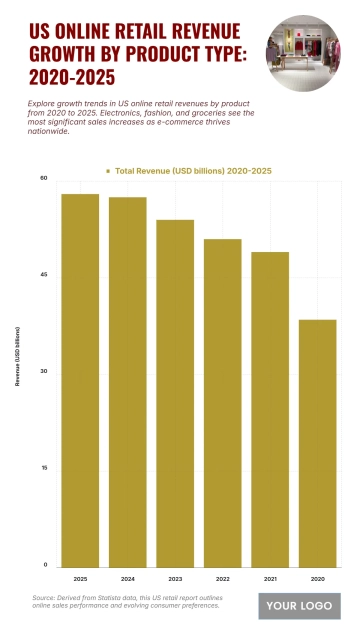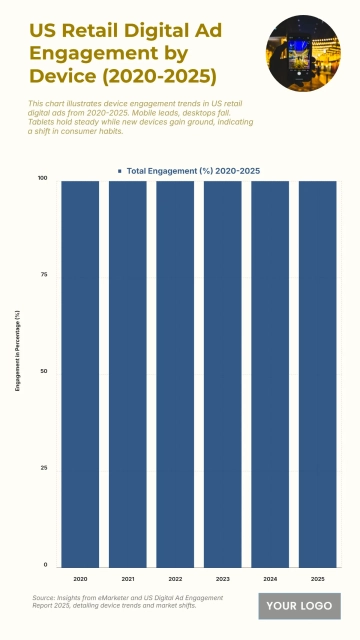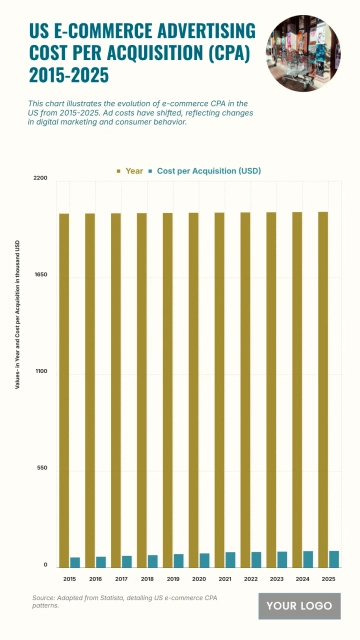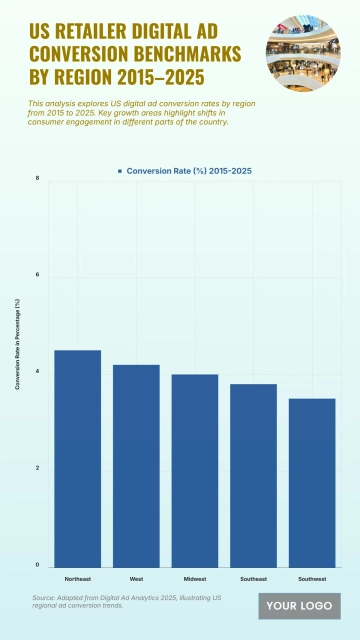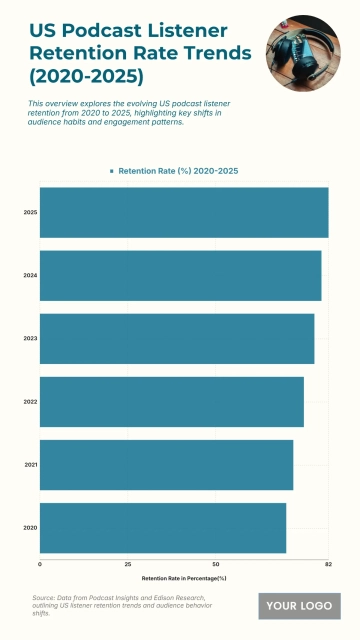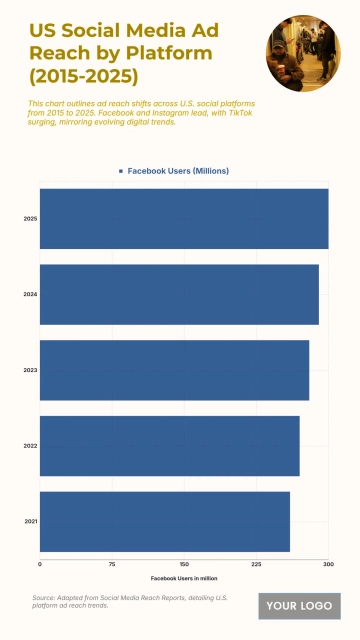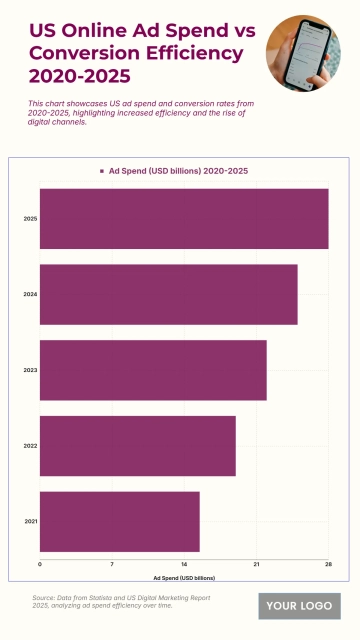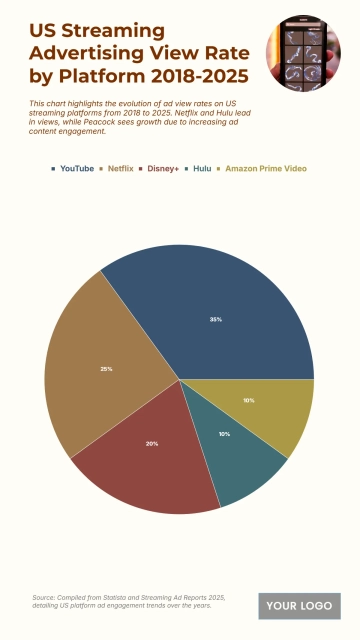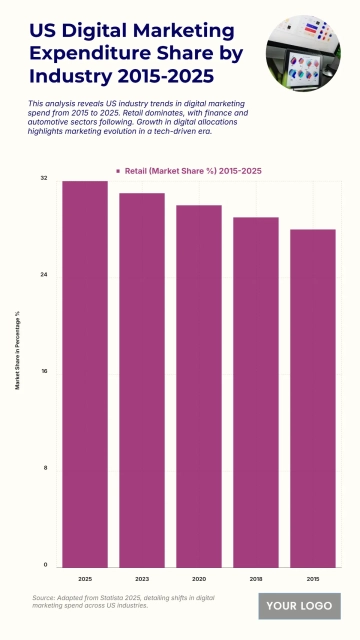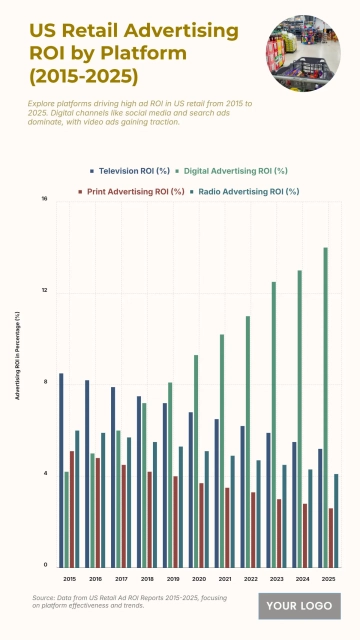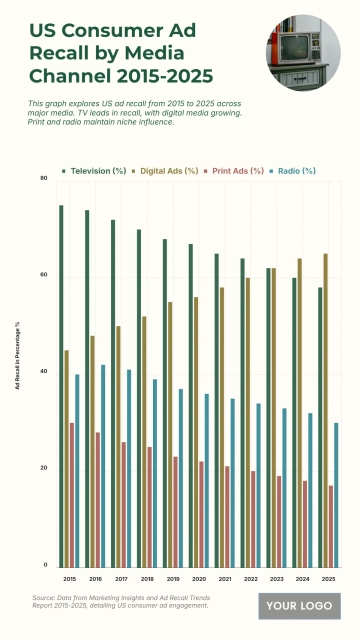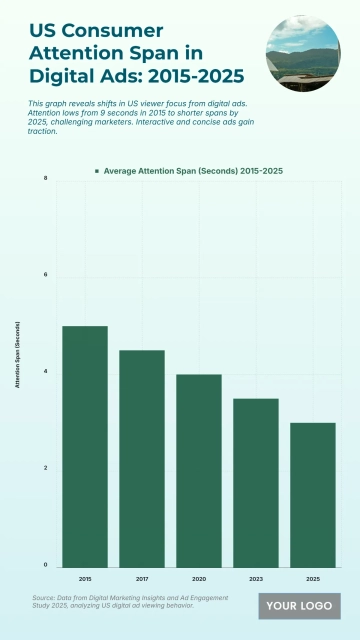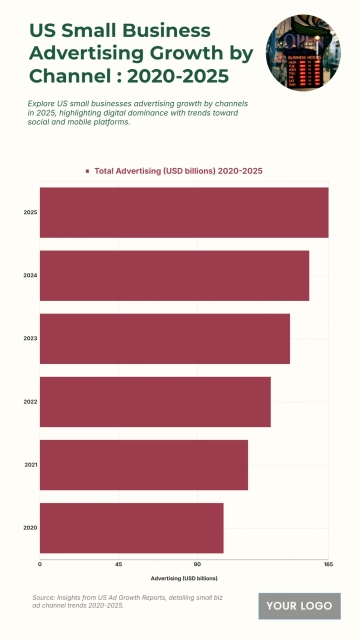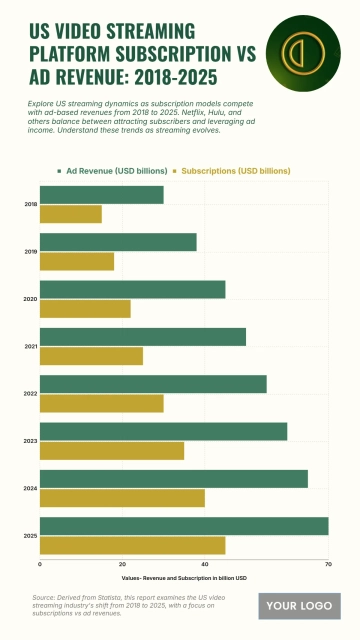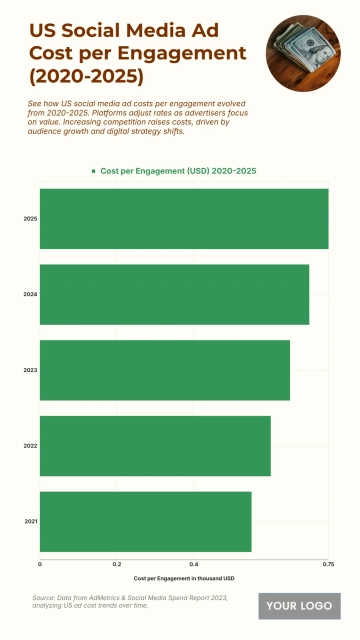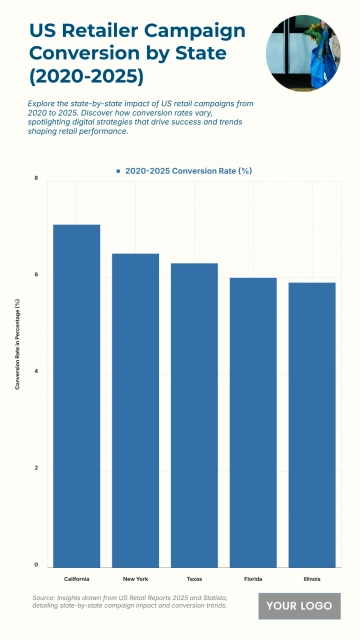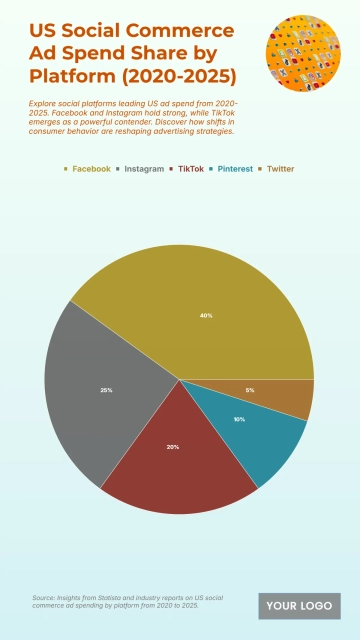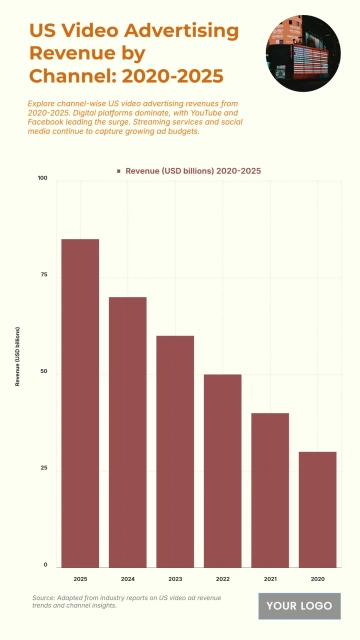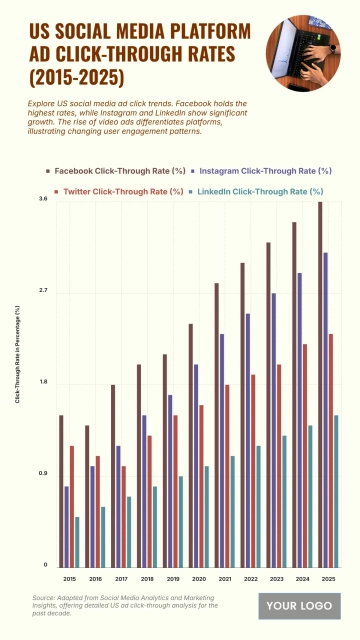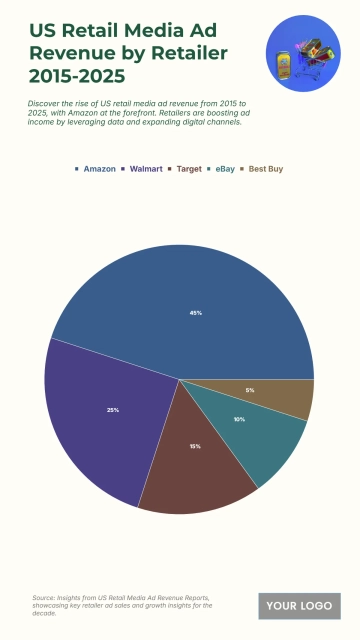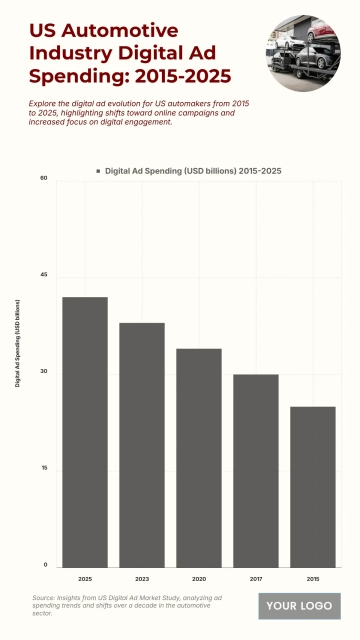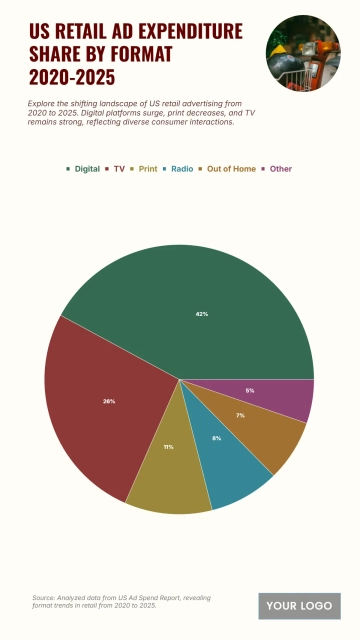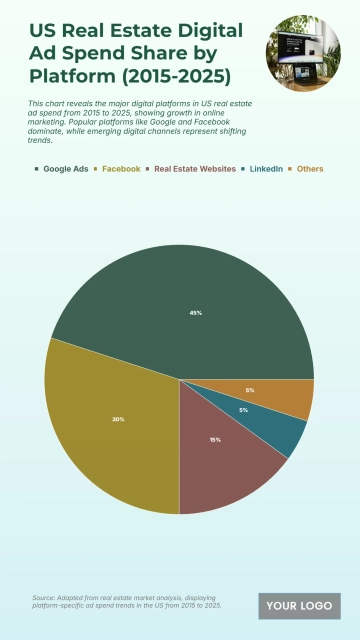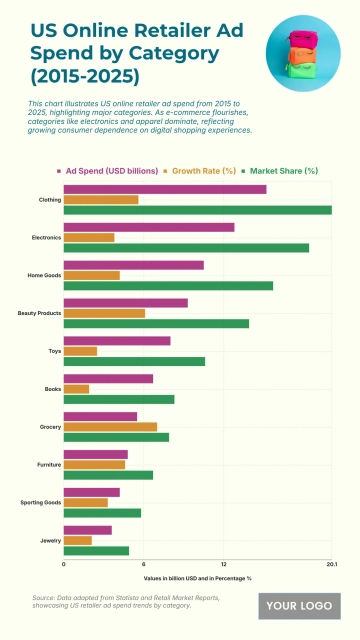Free US Online Purchase Behavior by Gender from 2015 to 2025 Chart
The chart shows a clear shift in online purchasing patterns between male and female consumers over the decade, reflecting evolving shopping behaviors and digital engagement. In 2015, male purchases accounted for 45%, while female purchases dominated with 55%. Over the years, male engagement steadily grew, reaching 50% in 2020, marking the tipping point where both genders held an equal share. From 2021 onward, male purchasing overtook female, increasing consistently to 51% in 2021, 52% in 2022, and 53% in 2023, indicating stronger digital adoption by men. This upward trend continued with 54% in 2024 and peaked at 55% by 2025, signifying an expanded presence in categories such as electronics, gadgets, and online marketplaces. In contrast, female purchasing share declined gradually from 55% in 2015 to 45% in 2025, though women remained key consumers in fashion, home goods, and lifestyle categories. This transition highlights not only changing e-commerce demographics but also the growing diversification of product interests among male shoppers, coupled with enhanced accessibility to digital platforms. The narrowing gap also underscores the normalization of online shopping across gender groups in the U.S.
| Year | Male Purchases (% of total) | Female Purchases (% of total) |
|---|---|---|
| 2015 | 45 | 55 |
| 2016 | 46 | 54 |
| 2017 | 47 | 53 |
| 2018 | 48 | 52 |
| 2019 | 49 | 51 |
| 2020 | 50 | 50 |
| 2021 | 51 | 49 |
| 2022 | 52 | 48 |
| 2023 | 53 | 47 |
| 2024 | 54 | 46 |
| 2025 | 55 | 45 |
